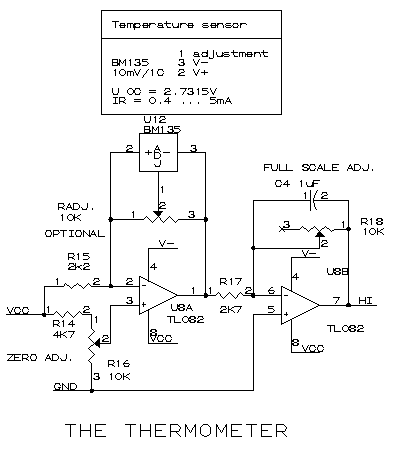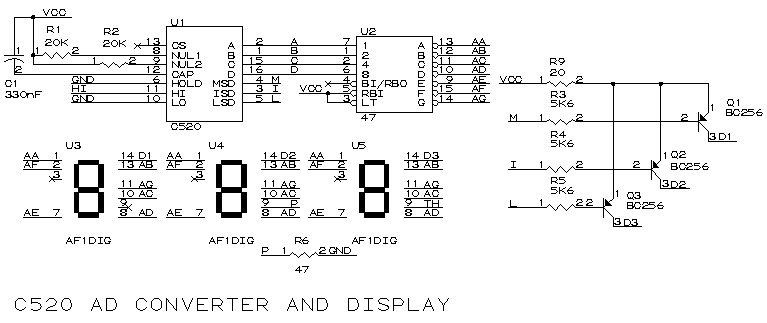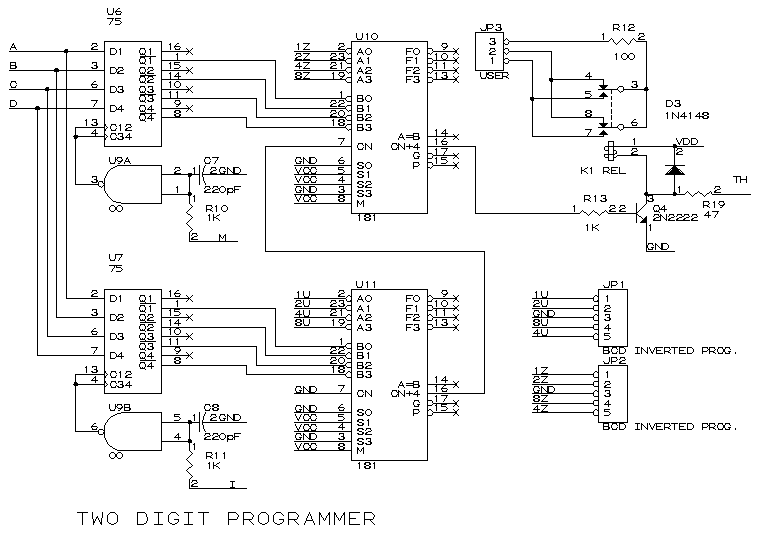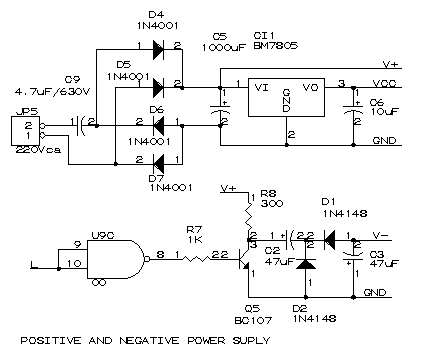
C520 based digital thermometer and thermostat

The zero scale adjust resistor was replaced with R1 and R2 and full scale
adjust resistor (normally connected between pin 13 and ground ) is missing.
C1 set the numbers of readings/second at a reasonable value (3 to 6 for a
good visibility). Demultiplexing circuit Q1 to Q3 supplies the common anodes
digits. U2 is a normal TTL BCD to 7 segments, common
anodes decoder, it has only the disadvantage that can't decode - sign , this
appears like a c sign on display. Because only positive temperature are measured
this situation will never be visible. Analogic signal is applied between
HI and LOW pins. This signal comes from the thermometer section:

The thermometer use a romanian temperature sensor BM135, it's like a diode
with better characteristics: +10mV/C instead of -2.2mV/C. For a good
replaceability of temperature sensor an optional adjustment resistor must
be added. In this application the sensor is biasing under constant current.
Repetitive and successive operation must be done for calibrating the thermometer:
two fixed temperature points ( at 0C and 100C ) are necessarily, with sensor
at 0C a ZERO ADJ. is done, with sensor at 100C a FULL SCALE ADJ. is
done. Because these two adjustments are interdependently, must be done for
3...4 times until
the correct measurement appears. Programming the set temperature is show
in next section:

U6 and U7 latch the tens and units digits of temperature measurement
simultaneously with multiplexing signals M ( Most Semnificative Digit ) and
I (Intermediate Semnificative Digit ). Because multiplexing signals comes
with a small pause between them, these signals must be integrated with R11,
C8 and R10,C7 to prevent false spikes. Tens digit is compared in U10 ALU
with preset tens from BCD inverted programmer connected at JP2. Unit digit
is compared in U11 ALU with preset units from BCD inverted programmer connected
at JP1. When the preset temperature is equal with the measured temperature,
K1 relay is released and the point of last digit display ( U5 ) become blank.
A better way is to use instead of 181 ALU two 485, 4bit magnitude comparator
or much better is to built a thermostat using a PIC16F84 microcontroller.
A few years ago when I made this project these were the best devices I've
had...
And of course all these electronics needs a power supplies:

One more phrase: C9 must be a very good polyester capacitor, U10 and U11 CMOS ALU and U3, U4 and U5 low current display digits. Supplementary 100nF capacitors ( not shown in schematics) must be soldered on power pins near the C520 converter if the cheaper solution of power supplies ( show above ) without transformer is used.
Back to Vasile's
electronics page